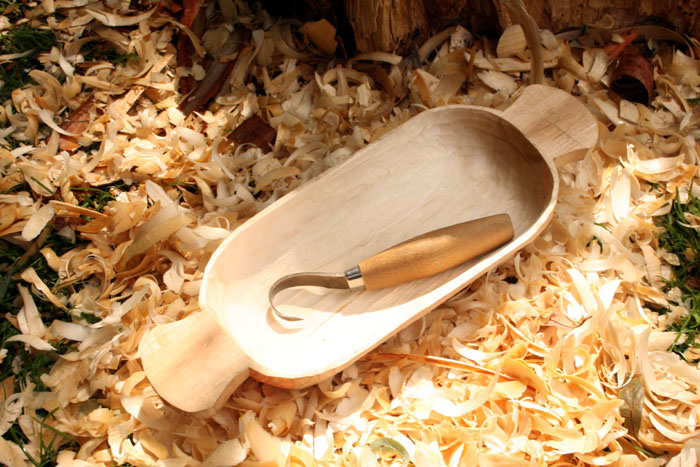There are a few essential things you need to know if you are serious about upping your woodworking game outdoors; where to start, what you need and necessary skills to help you in any survival situation.
Tool knowledge; understanding the types of wood available to use, and most importantly, how to work with it are all critical components to becoming a total extreme woodworker badass, and ones which will never go out of style. Using woodworking power tools can be extremely dangerous and in most emergency situations you will never have access to electricity, so for the purpose of this article we will focus only on beginner tools and strategies anyone can use if needed.
Surviving in the bush can all come down to knowing how to make the most of what you are given to work with at the time...If you can create simple spears, arrows, pegs, floatation devices, emergency accommodation and any other life-saving devices made of wood—or similar— then our job here is complete.
But before you can get started you need to prepare. Here are what we believe to be a few of the essential steps to becoming a master of the outback.
Grip Strength / Increasing Manual Dexterity
Often overlooked, manual dexterity is the number one factor in becoming an excellent craftsman especially when it comes to carving (or creating Tarzan-style wooden clubs with ornate detailing). There really are no limits to what you can do when it comes to creating outdoors but you are not going to get very far if you don't have a certain level of awareness—and grip strength— in your hands and fingers.
This may sound pretty simple, but building up your grip strength can take a bit of time and a serious commitment to the cause. Squeezing tennis balls, ripping up newspaper, hanging off bars and utilizing sand or uncooked rice in a different capacity are our best recommendations to obtain hulk-like hands and guns to rival Chris Hemsworth. The side bonus of increasing your grip strength—aside from impressing the men or women in your life—is it will also help you with your rock climbing technique if you ever need to make a quick getaway.
Essential Tool - The Knife
One of the most important items in your woodworking survival tool kit, if not THE most important, is a good quality knife. Crocodile Dundee wasn't kidding about taking your knife choice seriously. There are so many out there to choose from it can be overwhelming, however it is important to select the most versatile which will help you craft the tools you need which also has MacGyver-style benefits.
Anything with rubber handles and features the blade handle all the way through—as well as a serrated edge—will work well. Ideally you want to look for a combination of a tactical blade and a survival knife to cover all bases as this will help you in both carving and hunting scenarios.
Understanding the Grain and Type of Wood
This is probably more relevant for those of you working with tools but I digress. If you only have a few pieces of wood if you do not understand the way the grain is flowing you can risk 'tearout' or a piece simply not holding up under pressure.

Understanding wood grain is an asset. (Source)
In brief you want to cut with the grain—not against it—as you can risk not only blunting your tools but seriously sabotaging your creation. Obviously this could be a major problem if you only have a few select pieces of wood to work with. Dry is also best when it comes to carving! Softwood is best when you are just starting out which brings us to...
Whittle Power
You can't get very far in woodworking outdoors without serious knife skills so this is the final step on your journey to becoming a masterful creator. Once you have found the appropriate knife and softwood—minus knots and with straight grain if possible—you need to practice, practice, practice.
It's similar to peeling an apple but you are doing this with your knife on the softwood. As your dexterity improves you can move onto harder wood and different types of grain.
Know Your Joints
No, not the illegal ones. We mean the ones which will help you bring some of your projects into reality. As you progress with your whittling skills you can easily advance the type of projects you create by understanding joinery better. We recommend starting out with a 'butt-joint', a lap-joint or even a dovetail joint initially before moving onto more advanced techniques.









